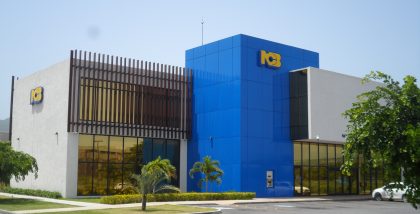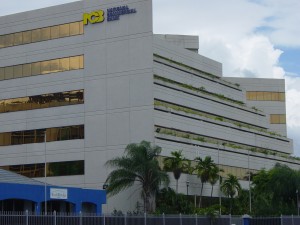Jamaica’s largest commercial bank may not be Jamaica’s central bank, but their size and profitability probably rank them just behind Bank of Jamaica as the most powerful and influential financial institution in the country. NCB’s influence on the local forex market is only exceeded by that of BOJ, no other bank comes close, locally and their power and reach may have saved the country from steep devaluation and a major rundown of the NIR.
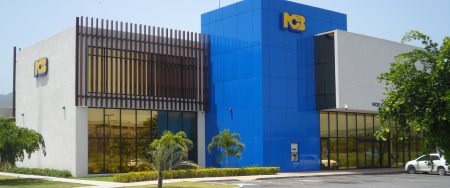
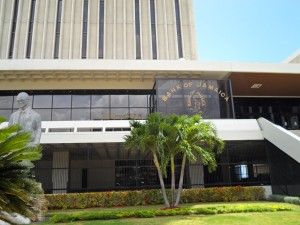
In September, after the Jamaican dollar rate versus the US dollar climbed above J$151, ICInsider.com was reliably informed that NCB management thought the rate was overextended and the bank sold large amounts into the market that helped to push the rate down towards $142 by the month end. The sales were made easier by the banking group, with the confirmation that they had raised US250 million from the issuance of diversified payment rights for payments due from correspondent banks.
NCB is not the darling of a large segment of Jamaican society as they dominate so much of the financial sector. Many Jamaicans see the multi-billion profit of the NCB Group as insane in a country where the majority struggle financially. Worse, many small customers of the bank see them as uncaring and lacking good customer relation practices.
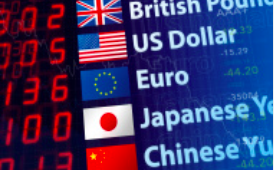 The extent of NCB’s impact on the local foreign exchange market is not fully known. There are strong views by many with knowledge of developments within the financial sector that sees National Commercial Bank as the main players that influence the value of the Jamaican dollar and they do not like it.
The extent of NCB’s impact on the local foreign exchange market is not fully known. There are strong views by many with knowledge of developments within the financial sector that sees National Commercial Bank as the main players that influence the value of the Jamaican dollar and they do not like it.
Data out of the Bank of Jamaica for 2019 and 2020 indicate clearly that NCB impact on the market is extremely significant, but not in the manner many persons think. The data shows that when NCB is not a major net seller in the market, the exchange rate tends to depreciate and when they are not net sellers, the rate tends to appreciate.
In the period from the start of 2020 to late September, NCB sold a net of US$692 million to the market, in stark contrast to their nearest rival – Bank of Nova Scotia. BNS bought a net of US$38 million over the same period. In September last, NCB sold a net of US$127 million short and only had net purchase on just three days in the month.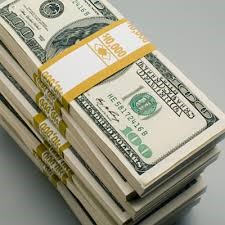
NCB’s net sales in 2020 follow a significant US$453 million net sales for the twelve months in 2019. NCB sold a net of US$217 million to the system between October and December last year, bringing the total for the year to a stunning US$909 million.
According to a spokesperson for NCB, the bank actively manages its foreign exchange portfolio, buying long or selling foreign currencies short as their reading of the market dictates. Part of the net sales, they explained, came from the conversion of non-US currencies in overseas markets into US dollars. The bank is also involved in forward contracts for buying and selling of the currency, this publication was informed by someone close to the group.
Included in funds sold to the market in 2020 was the conversion of CAD$400 million that was sold into the system as US dollars.
How do I invest in stocks?
 Persons interested in investing in stocks should open an account at a brokerage company so they can start investing when they decide to take the plunge.
Persons interested in investing in stocks should open an account at a brokerage company so they can start investing when they decide to take the plunge.
Stocks are not like fixed interest securities where the returns are usually known, up front. Put another way, there are no guarantees about the returns on stock market investments, that is a negative. History shows it to be a huge positive with no limit to possible gains. The basic principle is to find companies that are likely to increase profit going forward. This is most important, as profit are the main reasons why investors buy a stock, as it increases the value of a company.
Buy stocks with low price earnings (PE) ratio relative to the rest of the market. What does this mean? Listed companies are required to report profit and show the amount of profit earned per share (EPS). EPS is the profit for each issued share. In simple terms, the EPS is arrived at by dividing the profit by the total issued shares. This figure by itself does not mean much, but it allows for the computation of one of the most important and used investment tools, the PE ratio. PE is the price of the stock on the stock exchange divided by EPS.
 Do not buy stocks because the price is low in monetary terms. Instead, have laser like focus on stocks with lower PE ratios. Sometimes when persons buy shares, also called stocks, they may see quick gains, as may happen with the Wigton Windfarm initial public offer (IPO) issue that is now on the Market. More often, investors will not see any gains for months but then may do so with the passage of several months, if the company reports increased profit. Effectively, if one buys stocks of good quality companies they will usually grow in value.
Do not buy stocks because the price is low in monetary terms. Instead, have laser like focus on stocks with lower PE ratios. Sometimes when persons buy shares, also called stocks, they may see quick gains, as may happen with the Wigton Windfarm initial public offer (IPO) issue that is now on the Market. More often, investors will not see any gains for months but then may do so with the passage of several months, if the company reports increased profit. Effectively, if one buys stocks of good quality companies they will usually grow in value.
A good quality company is one that has consistent growth in earnings over a number of years, with few if any decline. There is more to it than the above, but these are a few basics. New investors are well advised to start small until they get a better feel of the market. Yes, you can start with $10,000, but $25,000 may be better.
Investors can find the earnings per share EPS and PE ratios for each local stock, on the stock market trading chart shown daily and included in the Junior and Main market reports. The key to using them is to find those stocks with the lowest PE ratios and get more information on them. This website analyses the companies on an ongoing basis to provide relevant investment information for investors.
When investing try to have about five different companies. Some companies to consider investing in now are: Wisynco, NCB, Fontana, General Accident and Wigton
More records for JSE main market
 Mayberry Jamaican Equities traded for the first time after a successful IPO at $9.82 and NCB Financial traded at $102, for a gain of $1.48 to help to main market to new record high in early trading on Tuesday.
Mayberry Jamaican Equities traded for the first time after a successful IPO at $9.82 and NCB Financial traded at $102, for a gain of $1.48 to help to main market to new record high in early trading on Tuesday.
The Mayberry Jamaican Equities trade was for 1,000 units and resulted in a gain of $2.26 or 29.89 percent gain on the IPO price of $7.56. NCB traded just 35,991 shares.
With just 45 minutes of trading elapsing, the All Jamaican Composite Index advanced by 1,476.90 points to a record high of 342,356.79 and the JSE Index gained 1,345.62 points to close at 311,925.68. The Junior market was down by 17.75 points to 3,088.81.
NCB jumps out Indies in IC TOP 10
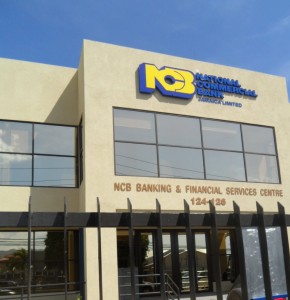 The main market of Jamaica Stock Market ended at a record close on Friday with NCB Financial jumping $3.01 to $100.01 as Jamaica’s largest financial group dropped out of the IC Insider.com’ Top 10 main market stock list.
The main market of Jamaica Stock Market ended at a record close on Friday with NCB Financial jumping $3.01 to $100.01 as Jamaica’s largest financial group dropped out of the IC Insider.com’ Top 10 main market stock list.
NCB price jumped on Friday, as investors responded positively to the group’s June results and was replaced by Carreras at 9th position. NCB remains an excellent stock to hold for long term growth and increased dividends. In the Junior market Caribbean Producers rose to $5.80 and Medical Disposables to $5.51 to ease out of the top listing and were replaced by recent Initial Public Offer, Indies Pharma at number 9 and Jetcon at 10.
The PE ratio for Junior Market Top stocks averages 7.4 compared to an average PE for the overall market of 12, based on 2018 estimated earnings and the main market PE stands at 7.8 for the top stocks, compared to a market average of 13, 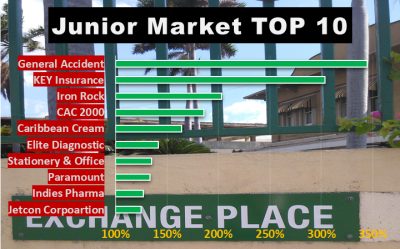 a good indicator of the level of undervaluation of these stocks.
a good indicator of the level of undervaluation of these stocks.
The TOP 10 stocks now trade at an average discount of 37 percent to the average for the Junior Market Top stocks but it’s a third of what the average PE for the year is likely to be of 20 times earnings and main market stocks traded at a discount of 40 percent to the market.
TOP 10 stocks are likely to deliver the best returns within a 12 months period. Stocks are selected based on projected earnings for each company’s current fiscal year. Based on an assumed PE for each, the likely gains are determined and then ranked, with the stocks with the highest potential gains ranked first followed by the rest, in descending order.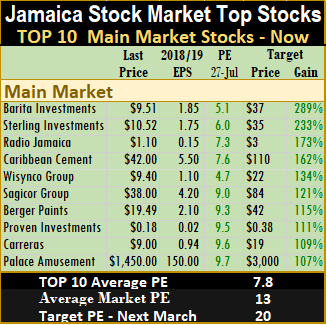
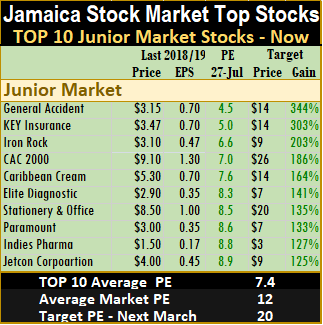 Potential values will change as stock prices fluctuate and will result in movements of the selection in and out of the lists for most weeks. Earnings per share are revised on an ongoing basis based on new information received that can result in changes in and out of the list as well.
Potential values will change as stock prices fluctuate and will result in movements of the selection in and out of the lists for most weeks. Earnings per share are revised on an ongoing basis based on new information received that can result in changes in and out of the list as well.
2 new IC TOP 10 listings
 This weeks’ review comes against the back drop of the main market hitting a record high on Friday in the morning session and the Junior market continuing to eke out modest gains.
This weeks’ review comes against the back drop of the main market hitting a record high on Friday in the morning session and the Junior market continuing to eke out modest gains.
Unlike last week when there are several changes to the TOP stocks, there are only two new additions this week. Victoria Mutual Investments and Jamaican Teas are out of the TOP 10 with Berger Paints that fell in price to $18.76 and Caribbean Cream are back in the TOP 10 lists.
TOP 10 stocks are likely to deliver the best returns within a 12 months period. Stocks are selected based on projected earnings for each company’s current fiscal year. 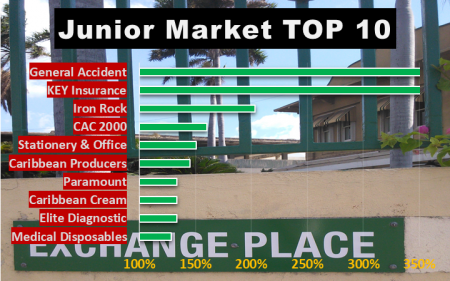 Based on an assumed PE for each, the likely gains are determined and then ranked, with the stocks with the highest potential gains ranked first followed by the rest, in descending order. Potential values will change as stock prices fluctuate and will result in movements of the selection in and out of the lists for most weeks. Earnings per share are revised on an ongoing basis based on new information received that can result in changes in and out of the list as well.
Based on an assumed PE for each, the likely gains are determined and then ranked, with the stocks with the highest potential gains ranked first followed by the rest, in descending order. Potential values will change as stock prices fluctuate and will result in movements of the selection in and out of the lists for most weeks. Earnings per share are revised on an ongoing basis based on new information received that can result in changes in and out of the list as well.
The past week saw a few results being posted and more are expected this week, including NCB Financial and Proven Investments that entered the TOP 10 last week, 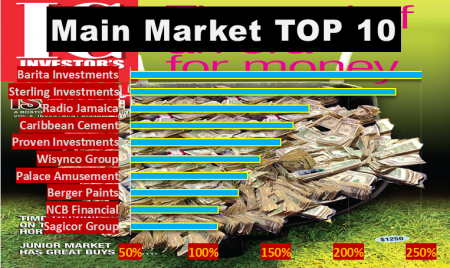 both are expected to report positive gains with NCB continuing from increases seen up to the second quarter and Proven that President, Christopher Williams informed IC Insider.com is performing well in all divisions, see Collapse of the JSE US market.
both are expected to report positive gains with NCB continuing from increases seen up to the second quarter and Proven that President, Christopher Williams informed IC Insider.com is performing well in all divisions, see Collapse of the JSE US market.
The PE ratio for Junior Market Top stocks averages 7.4 compared to an average PE for the overall market of 11.8, based on 2018 estimated earnings and the main market PE stands at 7.5 for the top stocks, compared to a market average of 12.5, this is a good indication of the level of undervaluation of these stocks.
IC Insider.com last week stated that there are warning signs of a tsunami that is on the way for the market. During last week one more sign came to the fore with a sharp drop in Treasury bill rates again, this coupled with scarcity of supply for many stocks. Investors seem to be going about their business as if prices will remain around current levels for a prolonged period. 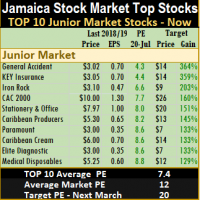
 Late comers to buying stocks who try to join the party will find get stocks but at a much higher prices as the year rolls on and that is confirmed by technical indicators in both the Main and Junior markets.
Late comers to buying stocks who try to join the party will find get stocks but at a much higher prices as the year rolls on and that is confirmed by technical indicators in both the Main and Junior markets.
The TOP 10 stocks now trade at an average discount of 37 percent to the average for the Junior Market Top stocks but it’s a third of what the average PE for the year is likely to be of 20 times earnings and main market stocks traded at a discount of 40 percent to the market.
Several changes to IC TOP stocks
 There are several changes to the TOP stocks, following an eventful week of trading on the Jamaican Stock Exchange, with the main market posting records on all five days and closing at record highs, on four of them.
There are several changes to the TOP stocks, following an eventful week of trading on the Jamaican Stock Exchange, with the main market posting records on all five days and closing at record highs, on four of them.
Former TOP 10 Junior Market listing, Derrimon Trading ordinary share, traded at an all-time high of $23 during the week, while former TOP 10 main market listings also hit new highs during the week, these are Jamaica Broilers trading briefly at a record high of $33, PanJam Investment at $58.99 and Pulse Investments trading up to $3.50 and current TOP 10 listing, 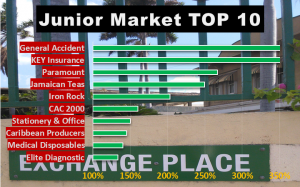 CAC2000 hits a new record high of $10.
CAC2000 hits a new record high of $10.
The TOP 10 listings at the end of the week, have a number of changes. Caribbean Producers returns with after the price slipped back to $5.30 from $5.50 and Caribbean Cream that was shunned by investors based on poor 2018 full year results, jumped 29 percent to $6.25 following the release of the first quarter results, with profit rising 59 percent. Medical Disposables renters the TOP 10 as well as Elite Diagnostic, replacing AMG Packaging and Caribbean Flavours both with earnings downgrade. 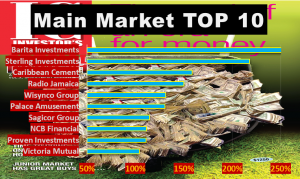 Proven Investments US dollar listed stock is now in the TOP 10 with the price closing down to 18 US cents during the week and Victoria Mutual Investments return to the list, replacing Salada Foods and Grace Kennedy that rose from $52 to $54.
Proven Investments US dollar listed stock is now in the TOP 10 with the price closing down to 18 US cents during the week and Victoria Mutual Investments return to the list, replacing Salada Foods and Grace Kennedy that rose from $52 to $54.
The PE ratio for Junior Market Top stocks averages 6.7 compared to an average PE for the overall market of 11.4, based on 2018 estimated earnings and the main market PE stands at 7.8 for the top stocks, compared to a market average of 13, this is a good indication of the level of undervaluation of these stocks.
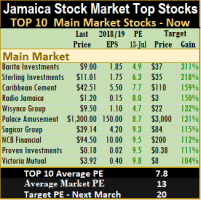
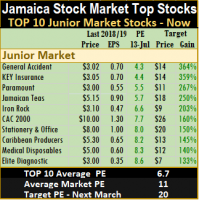 The sharp movement in the prices of some main market stocks this past week, encouraged by minimal supplies, is a warning sign of a tsunami that is on the way for the market. Late comers to buying stocks who try to join the party will find get stocks but at a much higher prices than weeks ago.
The sharp movement in the prices of some main market stocks this past week, encouraged by minimal supplies, is a warning sign of a tsunami that is on the way for the market. Late comers to buying stocks who try to join the party will find get stocks but at a much higher prices than weeks ago.
The TOP 10 stocks now trade at an average discount of 41 percent to the average for the Junior Market Top stocks but it’s a third of what the average PE for the year is likely to be of 20 times earnings and main market stocks traded at a discount of 40 percent to the market.
Lower Q2 profit for Scotia Group
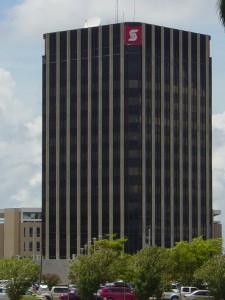 Scotia Group reported a 19 percent rise in half profit to $6.76 billion after tax, but that clouds the fall in profit for the second quarter to April that fell marginally thanks to a big jump in loan provisioning of $560 million compared to a small recovery of $6 million in the January quarter.
Scotia Group reported a 19 percent rise in half profit to $6.76 billion after tax, but that clouds the fall in profit for the second quarter to April that fell marginally thanks to a big jump in loan provisioning of $560 million compared to a small recovery of $6 million in the January quarter.
The half year earnings are bolstered by a gain on sale of subsidiary of $753 million.
Shareholders don’t have much to cheer about except that loan losses are within the range of that of 2017 along with a few other good developments. Net interest income fell to $6.2 billion from $6.5 billion in April 2017 quarter, Insurance revenues fell from $1.1 billion to $707 million. Cost were contained well, with salaries and benefits declining from $2.84 billion in 2017 to $2,46 billion in the April quarter while other operating costs, rose marginally from $1.76 billion to $1.86 billion.
Year to date, net interest income moved from 13.17 billion to $12.82 billion while loan impairment fell sharply from $975 million to $564 million. Net fee income declined from $4.4 billion to $4.1, but gains from foreign exchange trading activities delivered $1.66 billion versus $1.1 billion in 2017. While the half year figures show a bit of positive signs, investors should be focused on more recent developments, as these are more likely to point the way forward.
The group made modest progress in increasing loans, the most important asset for a bank. At the end of April, loans grew to $171 billion from $166.5 billion at the end of 2017 fiscal year, the increase is twice the growth rate between April last year and the year end. Investment securities rose from $120 billion at the end of October in 2017 to $131.6 billion and cash resources from $116.5 billion to $126.2 billion, at a much faster pace than increased in lending. Deposits by the public moved from $260.6 billion to $383 billion.

David Noel new Scotia Group’s CEO.
Scotia ended with earnings per share of $1.08 for the quarter and $2.17 for the half year, including the one-off capital gains from sale of the former subsidiary. A dividend of 48 cents per share was declared by the board, payable on July 18.
The strongest positive for the group is that they currently lend out just about 52 percent of deposited funds by its customers, leaving much room to grow loans whenever that time comes around.
The stock traded on the Jamaica Stock Exchange and closed at $53 but with these results, further movement up is going to be very challenging in the short term and leaves NCB Financial as the banking group of choice for investors seeking growth in stock price.
FCIB 2nd Caribbean bank to abort US listing
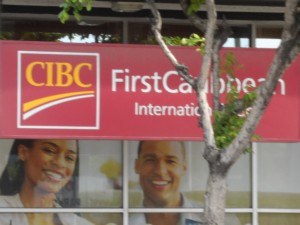
FirstCaribbean aborts IPO for NYSE listing.
Firstcaribbean International Bank (FCI) announced that they have withdrawn their planned initial public offering ahead of its plan to list on the New York Stock Exchange.
The Trinidad and Tobago Stock Exchange advised today, that they received notice from FCI advising of the withdrawal of the US registered public offering and listing of its shares on the NYSE in view of market conditions at this juncture. FCI had filed a registration statement in December 2017 relating to this public offering and proposed listing on the NYSE under the symbol “FCI”.
The company is the second Caribbean based banking group to have moved forward with plans to list on that stock exchange. The first was NCB Group in 2013, incurring a $680 million hit from the costs relating to aborted Initial Public Offering (IPO) in the 2013 fiscal year to September, according to the company’s audited financial statements.
The banking group was attempting to raise fresh capital in the international market, during the turbulent period ahead of the country reaching an agreement with the International Monetary Fund (IMF). The amount involved was written off against income thus helping to depress profits for the year.

NCB lost $700M in its aborted NYSE IPO plans in 2013.
Since then NCB has gone on to report record profits in 2017 with a 28 percent increase in the first quarter to December last year. At the same time FCIB that struggled for several years as it was battered by Caribbean countries in deep recession only saw a rebound in fortunes in recent years.
In 2013, the FCIB group adjusted profit was just US$35 million rising to $83 million in 2014 and onto $123 million the following year then $143 million in 2016 and $151 million last year, but revenues have just barely grown as loans have stagnated with US$6.36 billion in 2017 from US$6.3 billion in 2013.
